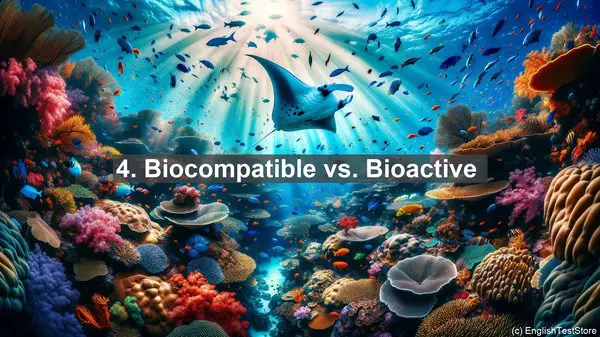Introduction
Welcome to today’s lesson on biopolymer research. In this lesson, we’ll be discussing the top 10 commonly confused words in this field. Understanding these terms is crucial for any student or researcher in the biopolymer domain. So, let’s dive right in!
1. Monomer vs. Polymer
One of the fundamental concepts in biopolymer research is the distinction between a monomer and a polymer. A monomer is a single unit, while a polymer is a chain of monomers. Think of it as a monomer being a brick, and a polymer being the wall made up of those bricks. Understanding this difference is essential for comprehending the structure and properties of biopolymers.
2. Homopolymer vs. Copolymer
Another common confusion arises between homopolymers and copolymers. A homopolymer consists of repeating units of the same monomer, while a copolymer contains two or more different monomers. It’s like having a single flavor of ice cream (homopolymer) versus a mix of multiple flavors (copolymer). The composition of a polymer greatly influences its characteristics, and that’s why distinguishing between these terms is crucial.

3. Biodegradable vs. Non-biodegradable
The environmental impact of biopolymers is a significant concern. Biodegradable polymers can be broken down by natural processes, while non-biodegradable polymers persist in the environment for long periods. Understanding the distinction between these terms is vital for designing sustainable materials and reducing waste.

4. Biocompatible vs. Bioactive
When it comes to biomedical applications, the terms biocompatible and bioactive often come up. Biocompatible materials are well-tolerated by living tissues without causing adverse reactions. On the other hand, bioactive materials have specific interactions with biological systems, such as promoting cell growth. Both properties are essential in various medical and tissue engineering applications.
5. Hydrophilic vs. Hydrophobic
The interaction of biopolymers with water is a key aspect. Hydrophilic polymers have an affinity for water, while hydrophobic polymers repel it. This property influences the behavior of biopolymers in aqueous environments, such as their solubility or ability to form stable structures. Understanding this distinction is crucial for many applications, including drug delivery systems.
6. Crosslinking vs. Degradation
The stability of biopolymers is often a topic of interest. Crosslinking refers to the formation of chemical bonds between polymer chains, leading to increased strength and stability. Degradation, on the other hand, is the breakdown of polymer chains. Balancing these processes is essential for controlling the lifespan and properties of biopolymers.
7. Crystalline vs. Amorphous
The arrangement of polymer chains greatly affects the material’s properties. In a crystalline polymer, the chains are highly ordered, resulting in a more rigid and organized structure. In contrast, an amorphous polymer has a random arrangement, leading to a more flexible and less defined structure. Understanding these terms is crucial for tailoring the properties of biopolymers for specific applications.
8. Rheology vs. Viscosity
The flow behavior of biopolymer solutions is often characterized using rheology and viscosity. Rheology is the study of how materials deform and flow, while viscosity is a measure of a fluid’s resistance to flow. These properties are essential for various processes, such as extrusion or coating, where the flow behavior of biopolymers plays a crucial role.
9. Bioplastic vs. Synthetic Plastic
With the increasing focus on sustainable materials, the distinction between bioplastics and synthetic plastics is vital. Bioplastics are derived from renewable sources and are often biodegradable. In contrast, synthetic plastics are derived from petrochemicals and are typically non-biodegradable. Understanding these terms is crucial for making informed choices regarding material selection and waste management.
10. Regeneration vs. Reproduction
Lastly, in the context of tissue engineering, regeneration and reproduction are distinct processes. Regeneration refers to the regrowth of damaged or lost tissue, often facilitated by scaffolds or biopolymers. Reproduction, on the other hand, involves the creation of new organisms. Understanding these terms is essential for developing strategies to promote tissue regeneration and address organ shortages.
